Monte Carlo Radiative Transfer Simulation to Analyze the Spectral Index for Remote Detection of Oil Dispersed in the Southern Baltic Sea Seawater Column: The Role of Water Surface State
Abstract
:1. Introduction
2. Materials and Methods
3. Results
4. Conclusions
Author Contributions
Funding
Institutional Review Board Statement
Informed Consent Statement
Conflicts of Interest
References
- Merlin, F.; Zhu, Z.; Yang, M.; Chen, B.; Lee, K.; Boufade, M.C.; Isaacman, L.; Zhang, B. Dispersants as marine oil spill treating agents: A review on mesoscale tests and field trials. Environ. Syst. Res. 2021, 10, 1–19. [Google Scholar] [CrossRef]
- Lai, Q.; Xie, Y.; Wang, C.; Wang, M.; Tan, J. Multiband directional reflectance properties of oil-in-water emulsion: Application for identification of oil spill types. Appl. Opt. 2021, 60, 6902–6909. [Google Scholar] [CrossRef] [PubMed]
- Haule, K.; Toczek, H.; Borzycka, K.; Darecki, M. Influence of Dispersed Oil on the Remote Sensing Reflectance—Field Experiment in the Baltic Sea. Sensors 2021, 21, 5733. [Google Scholar] [CrossRef] [PubMed]
- Fingas, M. Oil Spill Science and Technology, 2nd ed.; Elsevier: Amsterdam, The Netherlands, 2017. [Google Scholar]
- Dera, J.; Wozniak, B. Light Absorption in Sea Water, 4th ed.; Springer: Cham, Switzerland, 2007. [Google Scholar]
- Otremba, Z.; Zielinski, O.; Hu, C. Optical contrast of oil dispersed in seawater under windy conditions. J. Eur. Opt. Soc. Rapid Publ. 2013, 8, 13051. [Google Scholar] [CrossRef] [Green Version]
- Baszanowska, E.; Otremba, Z.; Piskozub, J. Modelling the Visibility of Baltic-Type Crude Oil Emulsion Dispersed in the Southern Baltic Sea. Remote Sens. 2021, 13, 1917. [Google Scholar] [CrossRef]
- Baszanowska, E.; Otremba, Z.; Piskozub, J. Modelling Remote Sensing Reflectance to Detect Dispersed Oil at Sea. Sensors 2020, 20, 863. [Google Scholar] [CrossRef] [PubMed] [Green Version]
- Baszanowska, E.; Otremba, Z.; Piskozub, J. Modelling a Spectral Index to Detect Dispersed Oil in a Seawater Column Depending on the Viewing Angle: Gulf of Gdańsk Case Study. Sensors 2020, 20, 5352. [Google Scholar] [CrossRef] [PubMed]
- Otremba, Z.; Piskozub, J. Modelling the Spectral Index to Detect a Baltic-Type Crude Oil Emulsion Dispersed in the Southern Baltic Sea. Remote Sens. 2021, 13, 3927. [Google Scholar] [CrossRef]
- Sagan, S. The Inherent Water Optical Properties of Baltic Waters. Diss. Monogr. Inst. Oceanol. PAS Sopot 2008, 21, 244. (In Polish) [Google Scholar]
- Otremba, Z. The impact on the reflectance in VIS of a type of crude oil film floating on the water surface. Opt. Express 2000, 31, 129–134. [Google Scholar] [CrossRef] [PubMed]
- Cox, C.; Munk, W.H. Statistics of the sea surface derived from sun glitter. J. Mar. Res. 1954, 13, 198–227. [Google Scholar]
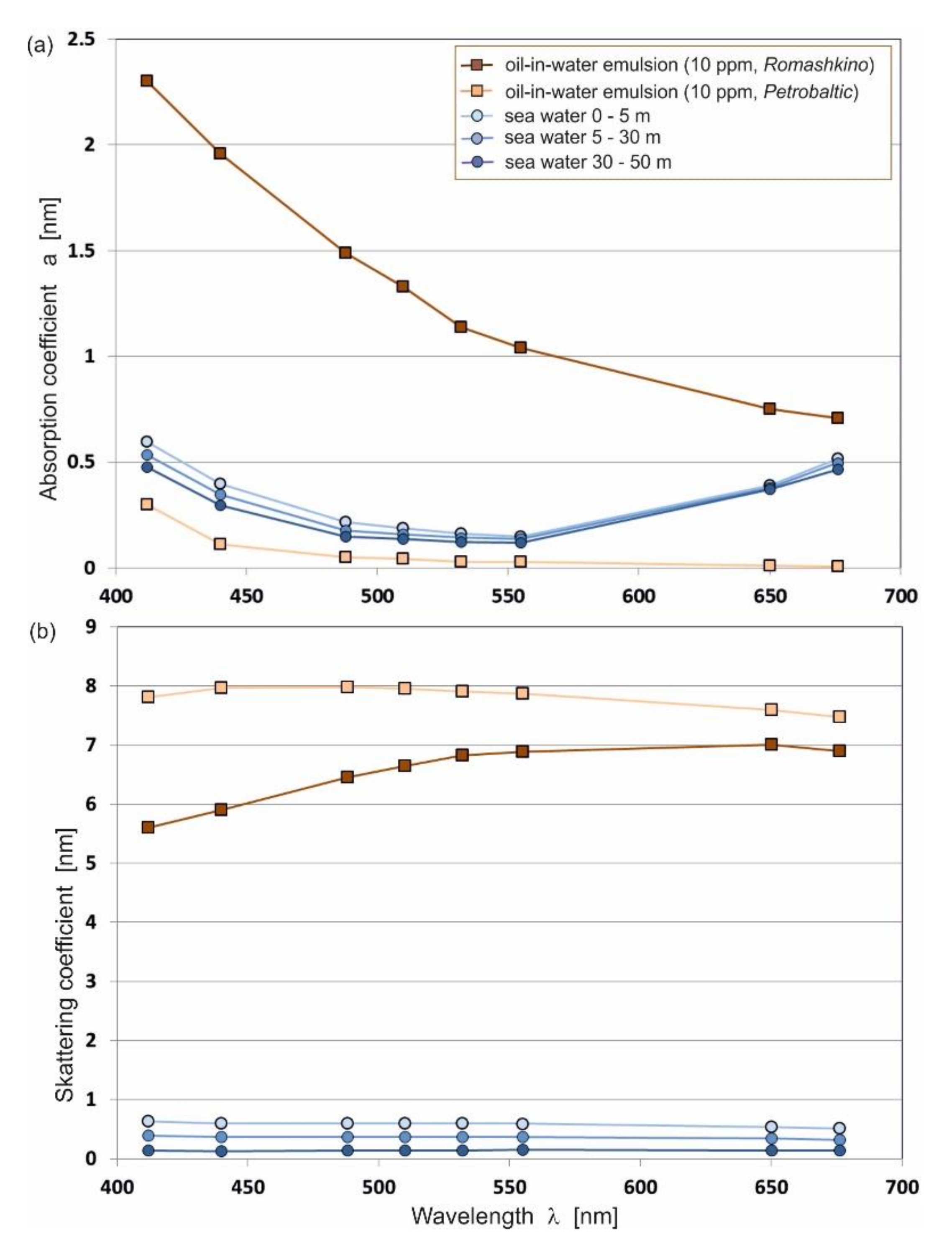
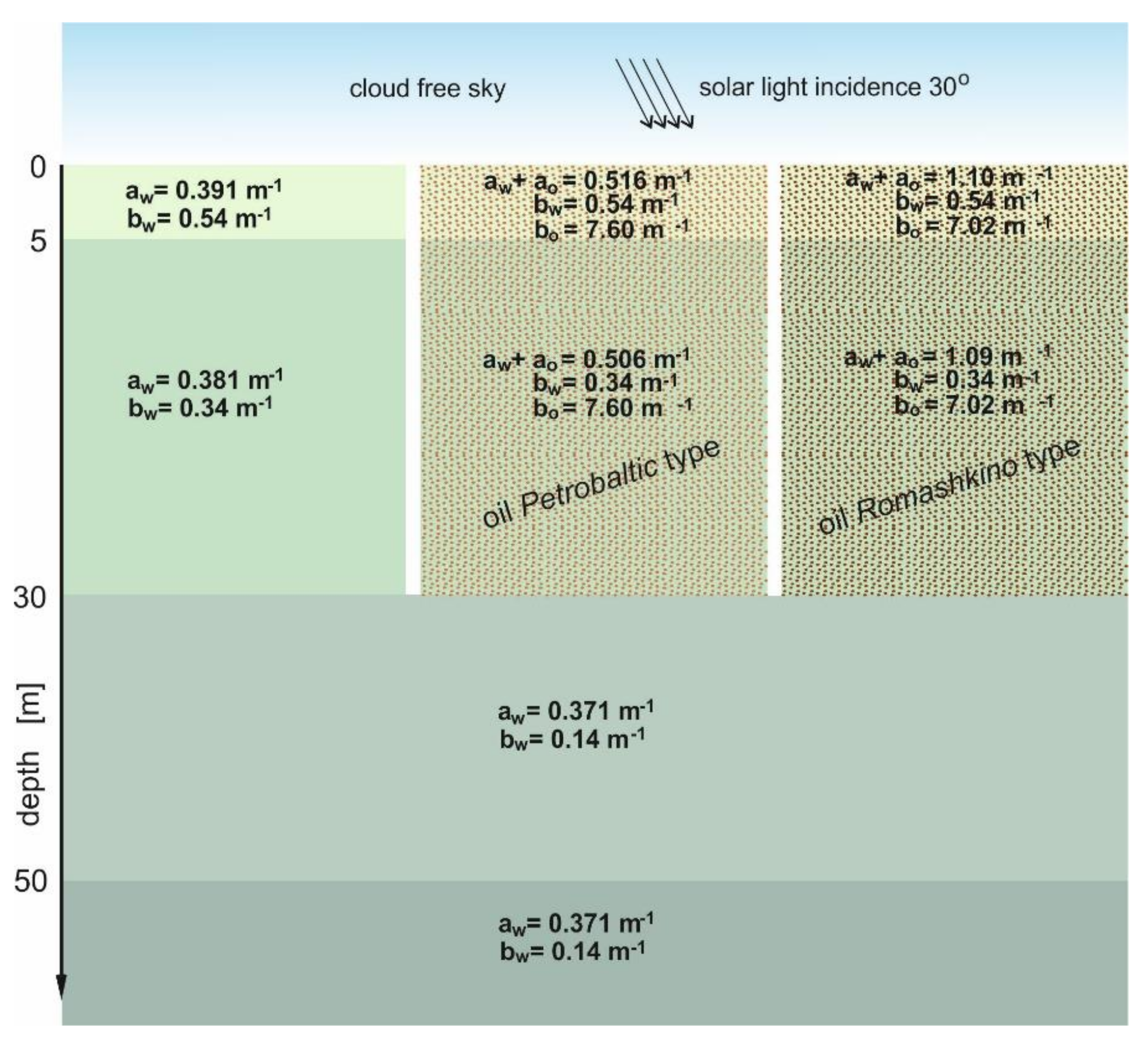
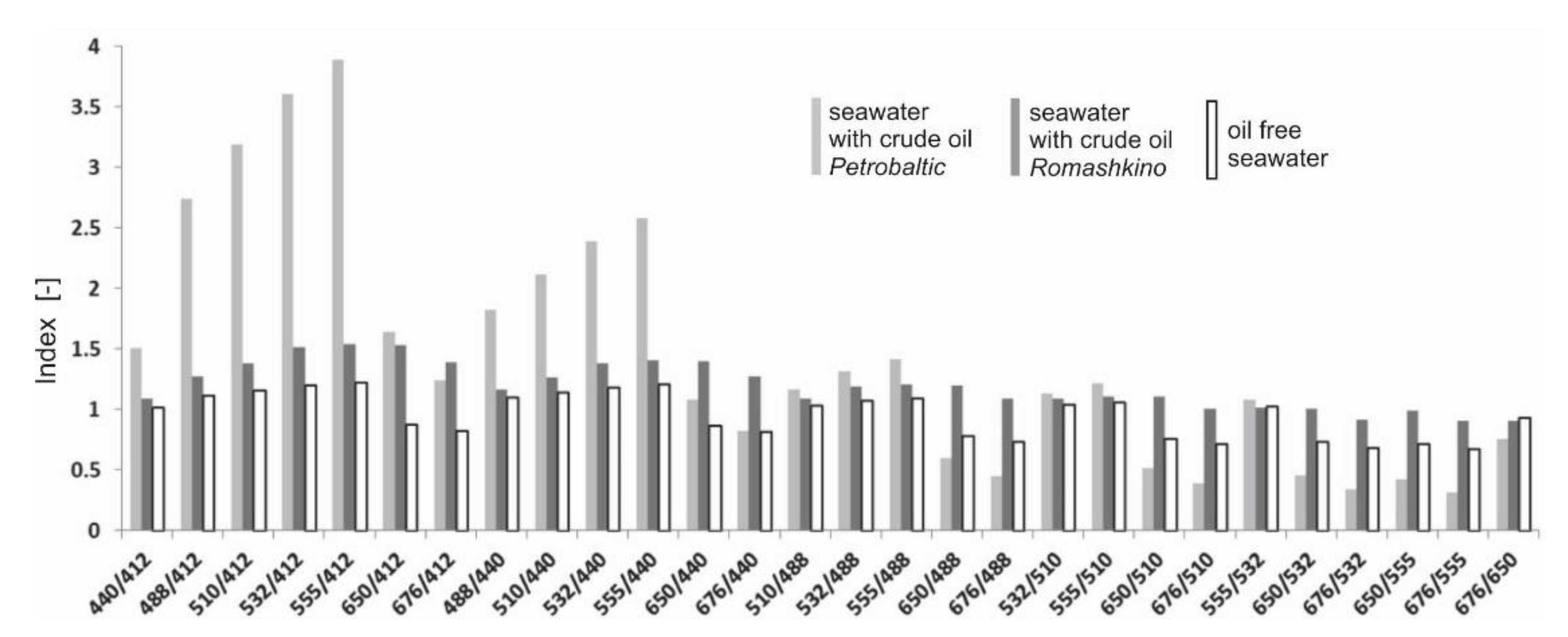
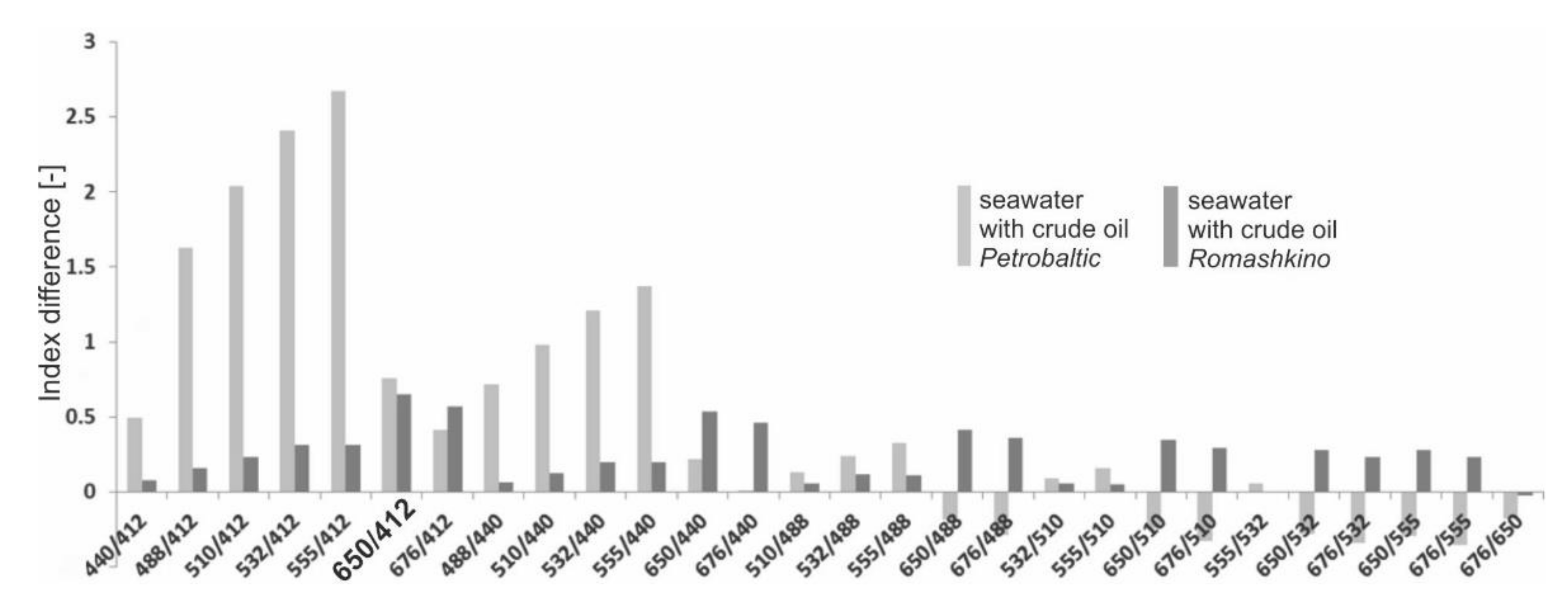
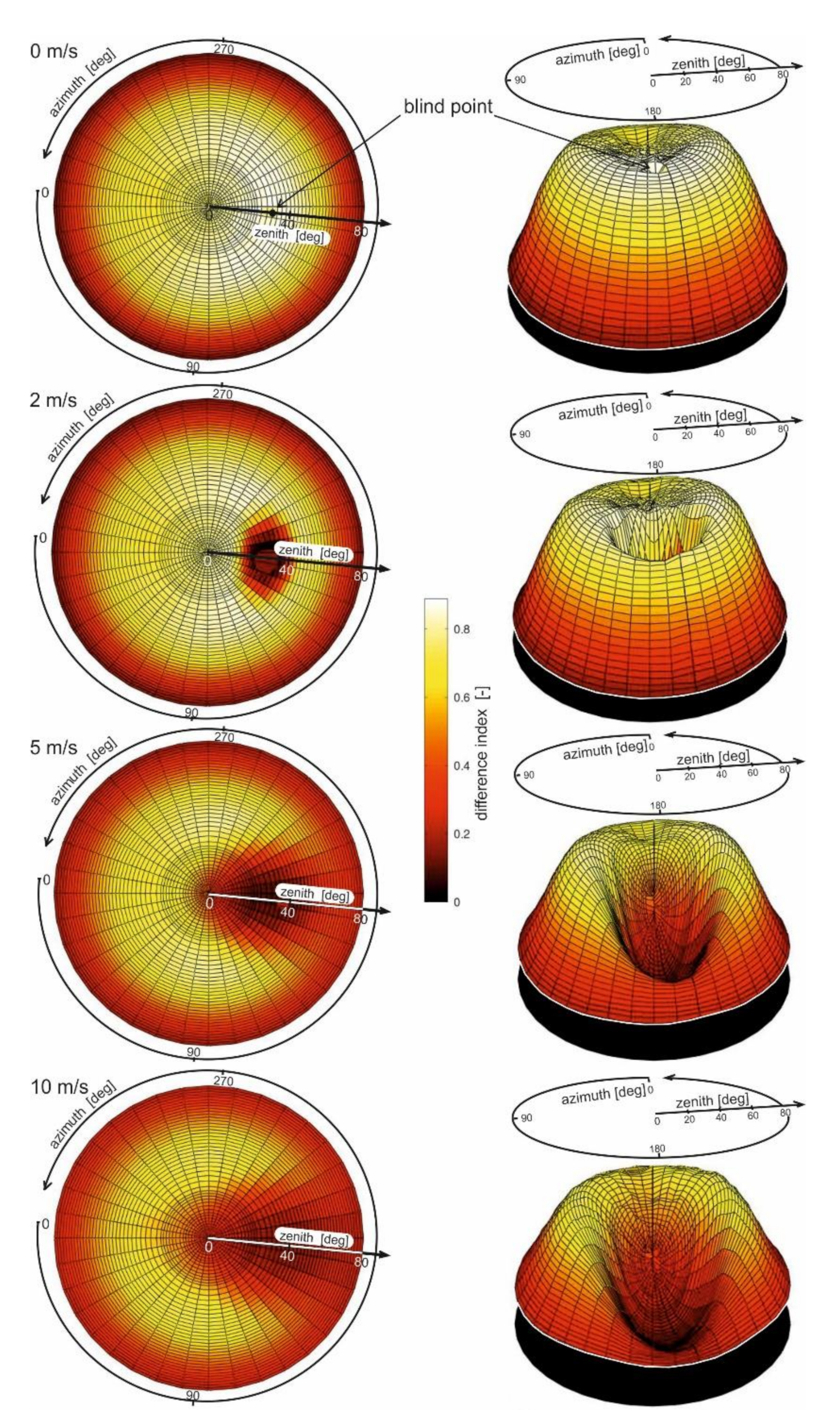
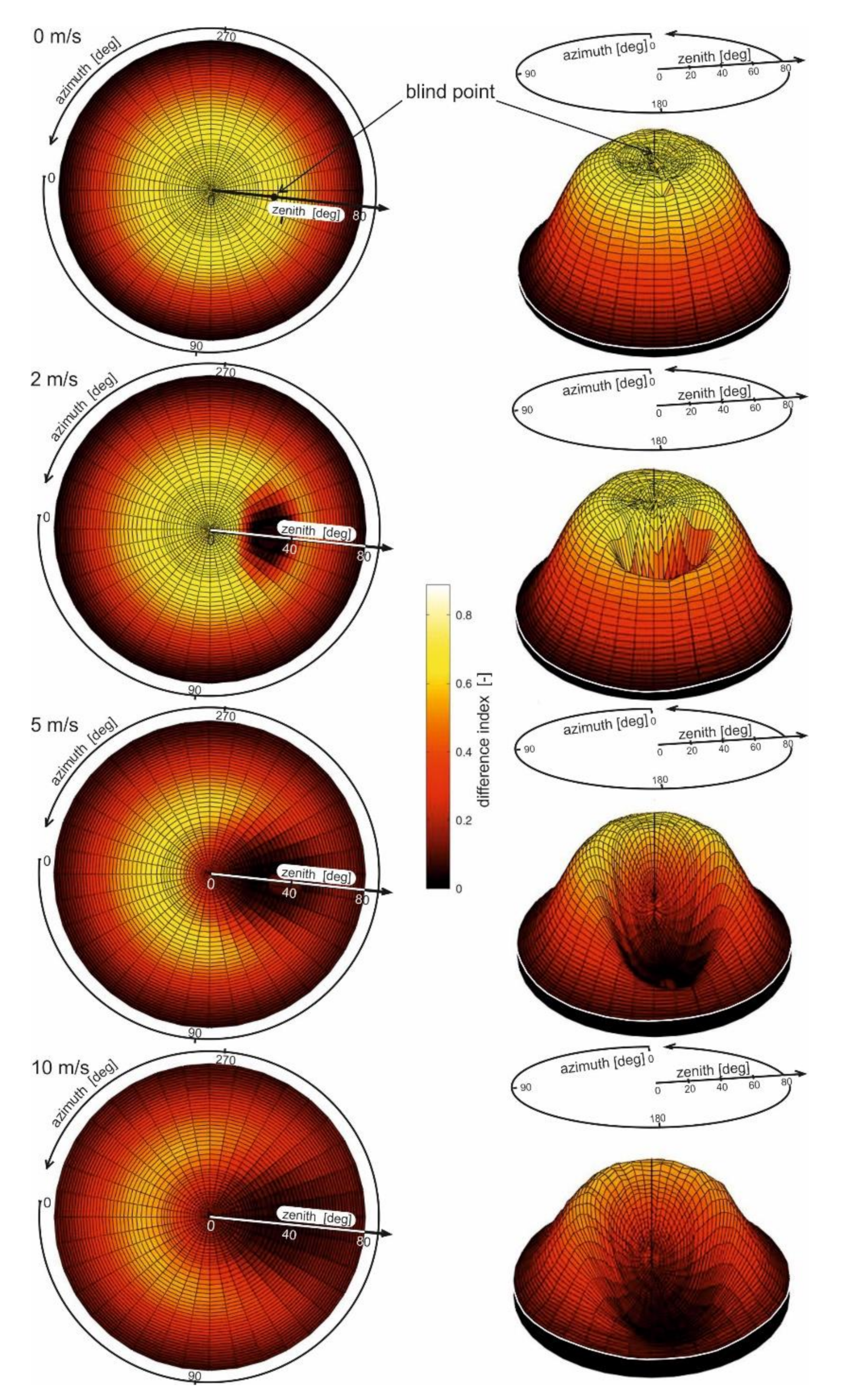
Publisher’s Note: MDPI stays neutral with regard to jurisdictional claims in published maps and institutional affiliations. |
© 2022 by the authors. Licensee MDPI, Basel, Switzerland. This article is an open access article distributed under the terms and conditions of the Creative Commons Attribution (CC BY) license (https://creativecommons.org/licenses/by/4.0/).
Share and Cite
Otremba, Z.; Piskozub, J. Monte Carlo Radiative Transfer Simulation to Analyze the Spectral Index for Remote Detection of Oil Dispersed in the Southern Baltic Sea Seawater Column: The Role of Water Surface State. Remote Sens. 2022, 14, 247. https://doi.org/10.3390/rs14020247
Otremba Z, Piskozub J. Monte Carlo Radiative Transfer Simulation to Analyze the Spectral Index for Remote Detection of Oil Dispersed in the Southern Baltic Sea Seawater Column: The Role of Water Surface State. Remote Sensing. 2022; 14(2):247. https://doi.org/10.3390/rs14020247
Chicago/Turabian StyleOtremba, Zbigniew, and Jacek Piskozub. 2022. "Monte Carlo Radiative Transfer Simulation to Analyze the Spectral Index for Remote Detection of Oil Dispersed in the Southern Baltic Sea Seawater Column: The Role of Water Surface State" Remote Sensing 14, no. 2: 247. https://doi.org/10.3390/rs14020247
APA StyleOtremba, Z., & Piskozub, J. (2022). Monte Carlo Radiative Transfer Simulation to Analyze the Spectral Index for Remote Detection of Oil Dispersed in the Southern Baltic Sea Seawater Column: The Role of Water Surface State. Remote Sensing, 14(2), 247. https://doi.org/10.3390/rs14020247





